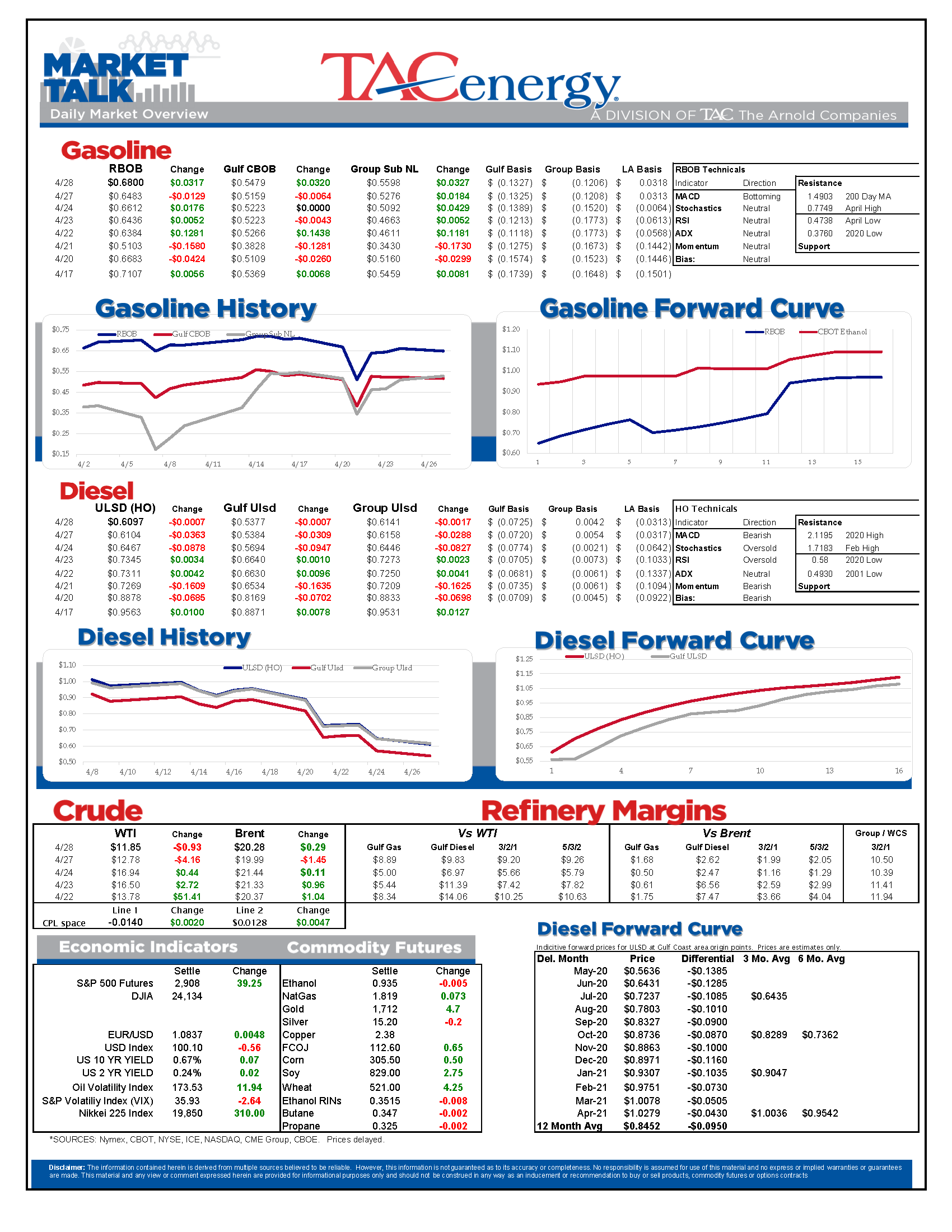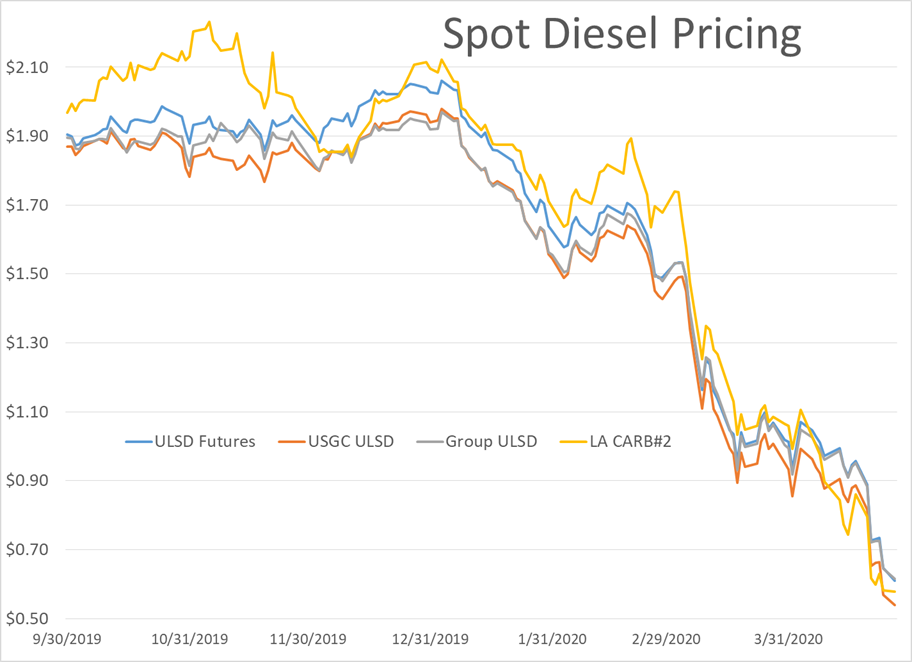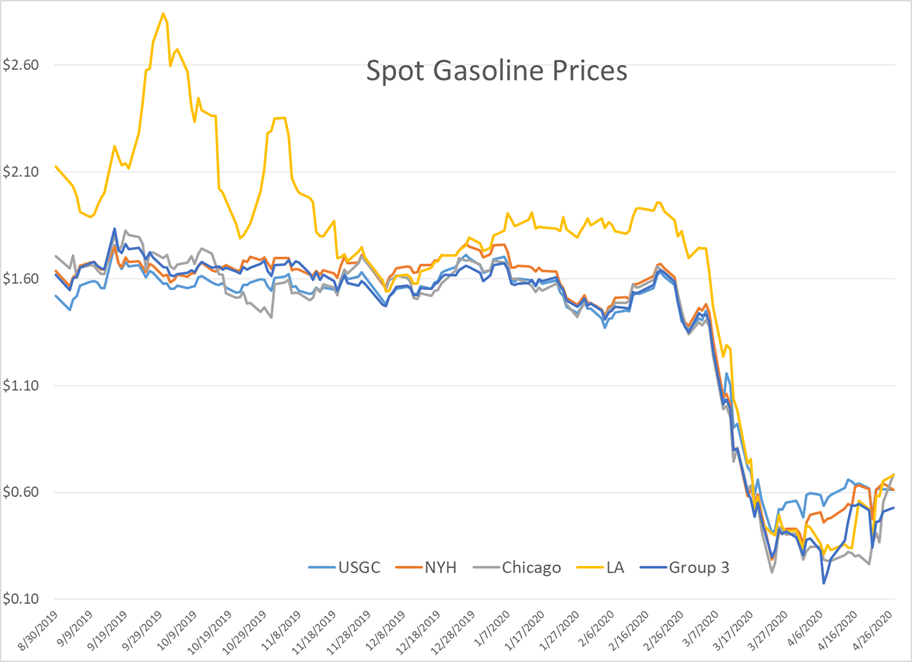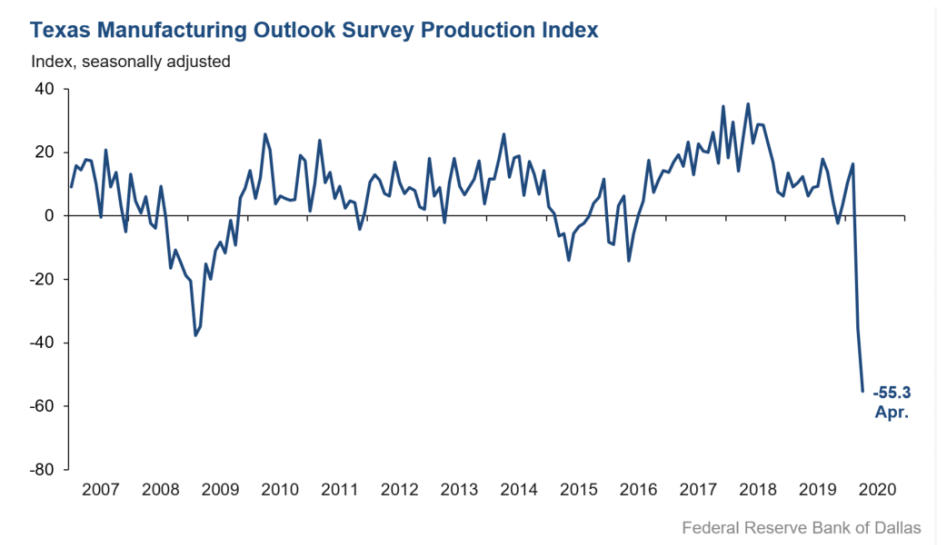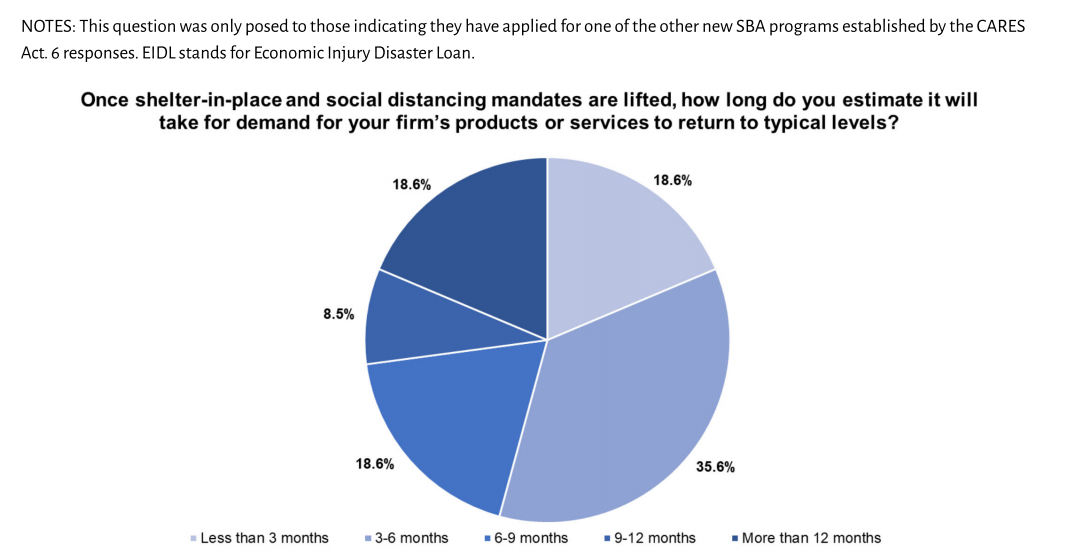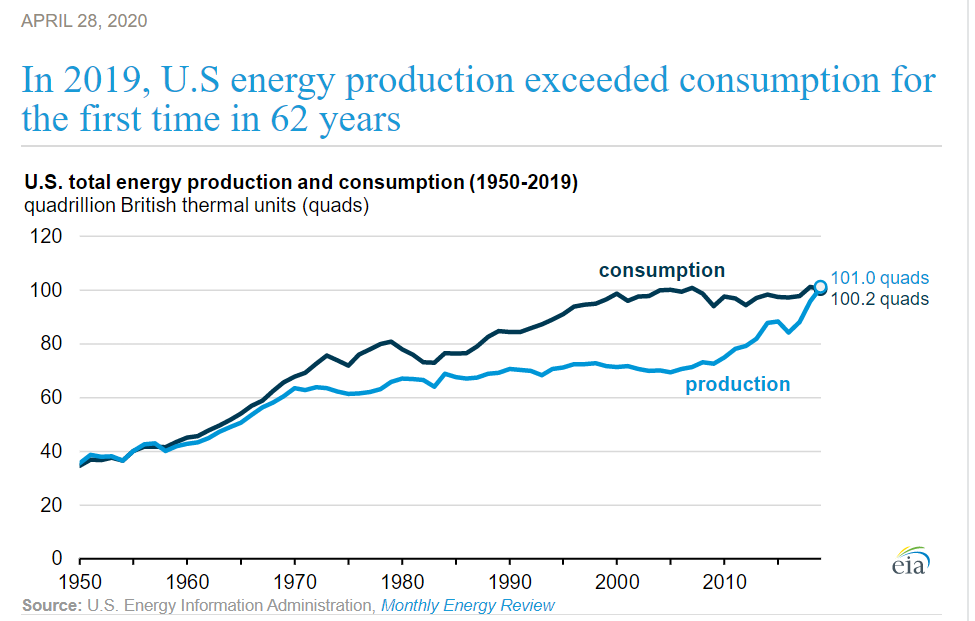Economic Shutdown Aims At New Part Of Oil Barrel

It’s a mixed bag for energy prices to start Tuesday’s trading as the economic shutdown takes aim at a new part of the oil barrel this week. What was a crude oil demand story in February, became a gasoline story in March, only to become a crude and diesel story in the back half of April.
Exports (or rather a lack of) seem to be the new cloud hanging over diesel prices, as U.S. refiners that became diesel suppliers to the world now struggle to find a home for those barrels. The Pemex force majeure debate continues to weigh heavily on futures and cash prices, with some U.S. spot markets dropping to 50 cents/gallon for ULSD, while futures reached a new 18-year low overnight.
Gasoline futures and cash markets are faring much better this week, as it appears driving demand may have reached a bottom, and refinery cut backs are starting to balance the supply/demand equation.
Another consequence of the May WTI shockwave: Liquidity in May refined products contracts, which expire Thursday, is already drying up with June seeing nearly 10x the May contract volume already this morning. Usually that disparity in volume is reserved for the last day or of the month, but may become the norm as traders are apparently afraid of becoming the next one stuck to sell a negative number.
Speaking of expiring contracts, more index funds are announcing that they’ll be moving positions further out along the forward curve, just as the U.S. oil fund was faced to do in order to avoid extinction. The announcement by S&P Global is getting early credit for the big drop in June WTI this morning.
The Dallas FED’s Manufacturing Survey gave another data point on how quickly things went from bad to worse, with several readings far exceeding the previous record low readings set in 2008. The survey did include supplemental questions to businesses that had applied for new SBA programs, with over half of those respondents suggesting their business would return to normal levels in six months or less once restrictions are lifted.
Not a good time for a reminder: The EIA this morning published a note highlighting U.S. energy production for 2019 exceeds domestic consumption for the first time in over 60 years. Unfortunately, this fact has become painfully clear for any producers in 2020, and isn’t a point to celebrate as it was just a few months ago. Petroleum continues to be the largest source of energy, while natural gas is the fastest growing, rapidly replacing coal in the energy stream.
Click here to download a PDF of today's TACenergy Market Talk.
News & Views
View All
Energy Futures Are Caught Up In Headline Tug-O-War This Morning
Energy futures are caught up in headline tug-o-war this morning with Canadian oil production concerns and a positive US GDP report trying to push prices higher while sinking Chinese demand worries and Gaza ceasefire hopes are applying downward pressure. The latter two seem to be favored more so far this morning with WTI and Brent crude oil futures down ~45 cents per barrel, while gasoline and diesel prices are down about half a cent and two cents, respectively.
No news is good news? Chicago gasoline prices dropped nearly 30 cents yesterday, despite there not being any update on Exxon’s Joliet refinery after further damage was discovered Wednesday. Its tough to say if traders have realized the supply situation isn’t as bad as originally thought or if this historically volatile market is just being itself (aka ‘Chicago being Chicago’).
The rain isn’t letting up along the Texas Gulf Coast today and is forecasted to carry on through the weekend. While much of the greater Houston area is under flood watch, only two refineries are within the (more serious) flood warning area: Marathon’s Galveston Bay and Valero’s Texas City refineries. However, notification that more work is needed at Phillip’s 66 Borger refinery (up in the panhandle) is the only filing we’ve seen come through the TECQ, so far.
Premiums over the tariff on Colonial’s Line 1 (aka linespace value) returned to zero yesterday, and actually traded in the negatives, after its extended run of positive values atypical of this time of year. Line 1’s counterpart, Line 2, which carries distillates from Houston to Greensboro NC, has traded at a discount so far this year, due to the healthy, if not over-, supply of diesel along the eastern seaboard.
Click here to download a PDF of today's TACenergy Market Talk.

WTI And Brent Crude Oil Futures Are Trading ~$1.50 Per Barrel Lower In Pre-Market Trading
The across-the-board drawdown in national energy stockpiles, as reported by the Department of Energy yesterday, stoked bullish sentiment Wednesday and prompt month gasoline, diesel, and crude oil futures published gains on the day. Those gains are being given back this morning.
The surprise rate cut by the People’s Bank of China is being blamed for the selling we are seeing in energy markets this morning. While the interest rate drop in both short- and medium-term loans won’t likely affect energy prices outright, the concern lies in the overall economic health of the world’s second largest economy and crude oil consumer. Prompt month WTI and Brent crude oil futures are trading ~$1.50 per barrel lower in pre-market trading, gasoline and diesel are following suit, shaving off .0400-.0450 per gallon.
Chicagoland RBOB has maintained its 60-cent premium over New York prices through this morning and shows no sign of coming down any time soon. Quite the opposite in fact: the storm damage, which knocked Exxon Mobil’s Joliet refinery offline on 7/15, seems to be more extensive than initially thought, potentially extending the repair time and pushing back the expected return date.
There are three main refineries that feed the Chicago market, the impact from one of them shutting down abruptly can be seen in the charts derived from aforementioned data published by the DOE. Refinery throughput in PADD 2 dropped 183,000 barrels per day, driving gasoline stockpiles in the area down to a new 5-year seasonal low.
While it seems all is quiet on the Atlantic front (for now), America’s Refineryland is forecasted to receive non-stop rain and thunderstorms for the next four days. While it may not be as dramatic as a hurricane, flooding and power outages can shut down refineries, and cities for that matter, all the same, as we learned from Beryl.


